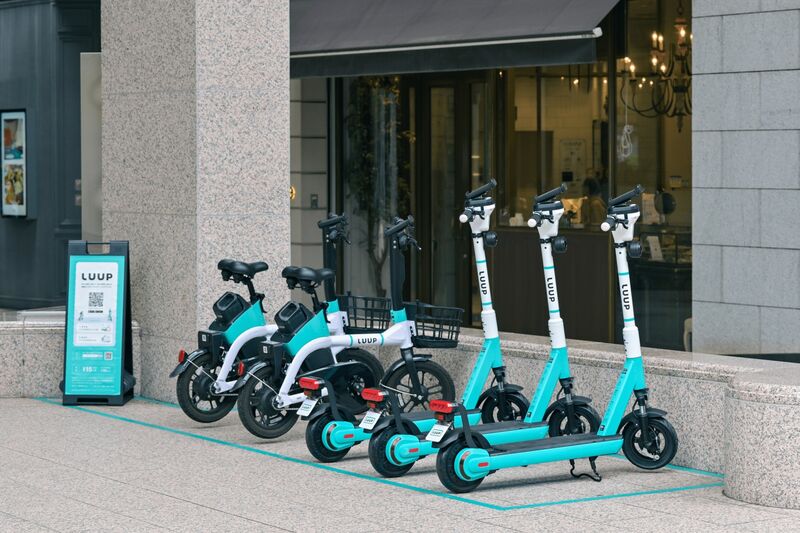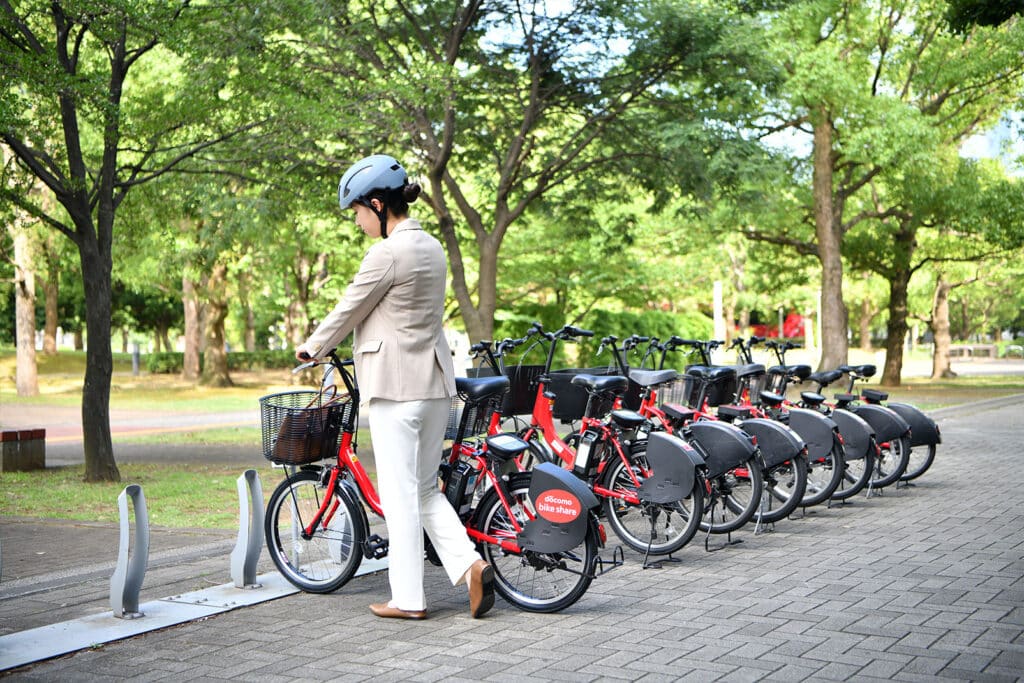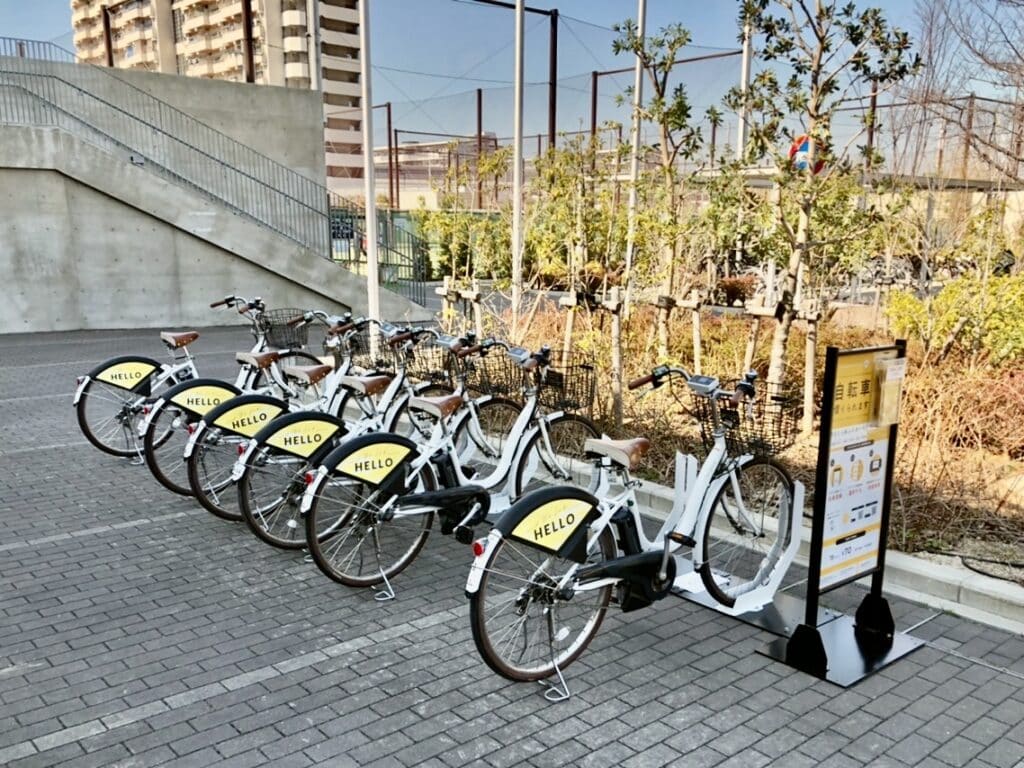- Top
- Turnpoint Media
- Mobility Industry Trends
- What is “MaaS”? | Thinking about the future of mobility based on MaaS level and domestic and international case studies
モビリティ業界動向
What is “MaaS”? | Thinking about the future of mobility based on MaaS level and domestic and international case studies
2024.07.30
2025.06.20

Need help with your job search?
Consultation
- I don't know if there is a job that fits my criteria
- I don't have time to look for jobs.
- I want to start thinking about career planning.
Turnpoint Consulting is a recruitment agency specializing in the automotive and mobility industry. Our industry experts will support you in your career.
Table of Contents
What is MaaS?
Making transportation more convenient and smarter. Such revolutionary services are now attracting attention around the world.
It is called ” Mobility as a Service (MaaS).
MaaS is a new mobility service that makes various modes of transportation easily accessible with a single smartphone. It is characterized by its ability to combine multiple means of transportation, such as buses, trains, cabs, and shared bicycles, to suggest the best route, and to seamlessly handle everything from reservations to payment.
While the conventional concept of a personal car and related transportation services were based on the premise of “owning a vehicle,” MaaS is based on the new concept of “using a service called transportation. This service is truly symbolic of the paradigm shift from ownership to use of transportation. The day is approaching in the near future when all kinds of transportation will become smooth and comfortable with a single smartphone.
Why MaaS is attracting attention
The reason MaaS is attracting so much attention is its huge market size. Not only traditional transportation operators, but also IT companies, automakers, financial institutions, energy companies, and many other industries are entering the market one after another.
This is due to the fact that MaaS is not merely an evolution of transportation services, but has the potential to help solve various social issues such as urban planning, environmental issues, and coping with an aging society. For example, it is expected to reduce the environmental burden of society by helping people to break away from dependence on their own cars, and to promote social participation by providing mobility support for the elderly.
Origin of MaaS
The concept of MaaS was born out of a movement toward a sustainable society. In particular, the transportation vision for 2050 formulated by Helsinki, the capital of Finland, had a major impact. This vision aims to realize a next-generation transportation society that does not depend on fossil fuels, and MaaS plays a central role in this vision.
In fact, a MaaS application called “Whim” has been introduced in Helsinki, and the results reported show that the use of public transportation has increased to 74%. This shows that MaaS is not just a concept, but actually has the power to change society.
MaaS Stages
MaaS service levels are generally classified into five levels.
- Level 0: Phase in which individual transportation services are provided independently.
- Level 1: Information is integrated and route searches, etc. are possible.
- Level 2: Reservations and payments can be made at once on the site/application.
- Level 3: Stage in which the above services are provided on a subscription basis.
- Level 4: Stage where the goals of the society as a whole are integrated (*unachieved level worldwide)

Currently, most MaaS services in Japan are said to be at Level 1 or 2. On the other hand, level 3 services have already appeared in Europe and the United States, and further evolution is expected in the future.
MaaS Business Introduction

Mobility Services Business
Among the players supporting MaaS, we will focus on “mobility service providers” that provide means of transportation and other services.
Shared active: a form of transportation in which the user drives the vehicle
1. car sharing: A service that allows members to rent a car for a period of time as needed. The vehicle is shared by multiple members.
(1) Select a car through a reservation or the application.
(2) Rent a car from a designated parking lot or other pick-up location.
(3) After use, return the car to the parking lot designated by the service company. (In some cases, the parking lot is the same as where you started using the car, but in other cases, the car can be returned to a different location.)
Fuel and insurance are included in the usage fee, making this convenient system an easy way to use a car when needed.

2. bike/micro-mobility sharing: a shared mobility service suitable for short distance travel in urban areas.
(1) Rent a vehicle from a designated bicycle parking lot.
(2) After use, return the bicycles to the same location or other designated bicycle parking areas.
It is an environmentally friendly and efficient means of transportation that avoids traffic congestion.

3. individual car sharing: a service in which a car owner rents his or her car directly to another individual; this service began to become popular around 2018.
(1) The driver finds a car that meets the requirements and submits a reservation request. When the owner approves the request, the reservation is complete.
(2) The details are discussed via the chat function of the application, the car is handed over at a decided location, and the driver uses the car.
(3) After use, the driver returns the car to the owner and the two parties evaluate each other’s performance.
This service provides income opportunities for car owners and flexible access to a wide variety of vehicle types for users.
Shared Passive: Form of transportation driven by service provider
1. ridesharing (carpooling): A service in which drivers use their own vehicles to pick up other people heading in the same direction. Typically, drivers and passengers are matched through a mobile app or web platform.
1) Enter your destination and desired time in the app and get matched with a driver
2) Meet the driver at the designated ride location
3) Pay the fare in the app after arriving at your destination
2. on-demand bus shuttle: A bus service that dynamically adjusts routes and schedules according to user demand.
(1) Make a reservation by entering the desired point and destination on the app
(2) Board a bus that operates on the optimal route calculated by the system
(3) Get off at the destination and pay the fare (payment may be made in advance).
3. on-demand taxi: A service that provides real-time cab reservations and dispatch through a smartphone application.
①Enter your current location and destination in the app and call for a cab
②Board the arriving cab and travel to your destination
③After arriving at your destination, complete payment in the app
What is the difference between car sharing and ride sharing?
Car sharing and ride sharing are different services.
- Car sharing: a system in which people who own cars rent their cars to other members.
- Ridesharing: A service in which drivers transport passengers to and from their destinations in their own vehicles.
The flow of the lifting of the ban on ridesharing in Japan
Ridesharing has been banned in Japan for many years as “Hakutaku,” and as an alternative, a private paid passenger transportation system was in operation. However, in 2023, the debate on ride-sharing was rekindled against the backdrop of cab supply shortages, and in April 2024, ride-sharing was launched as a “private vehicle utilization business” under the control of cab operators only in certain areas.
This is how the ban on ridesharing was lifted in Japan, but discussions toward a full ban have been stalled due to conflicting opinions within the administration.

MaaS operator
In the services that are responsible for MaaS, the platforms and apps that connect services and people are essential. The players who provide them are called ” MaaS operators. By using the apps they provide, users can easily plan their journeys and enjoy a seamless mobility experience.
MaaS platform: This is an infrastructure that integrates multiple modes of transportation and provides them as a centralized service. It encompasses a variety of transportation options, including public transportation, private vehicles, bicycles, and sharing services. The platform enables integration with various transportation operators and service providers and provides users with easy access to mobility-related information. It also integrates functions such as payment, booking, and route planning.
MaaS App: A user interface to utilize the above platforms. Installed on a smartphone or tablet, it provides access to a variety of mobility-related services. Focusing on ease of use and intuitive operation, it supports efficient mobility planning and use.
1. platform case study:
2. MaaS application case study:
*“my route” Toyota Financial Service Corporation
| <Reference Book> “MaaS Mobility – Game Change for All Industries Beyond the Revolution” Authors: Yosuke Hidaka, Kazuhiko Makimura, Takeichi Inoue, Kazo Inoue Publisher: Nikkei BP, Publication Year: 2018 |
Finally.
Focusing on MaaS, we have looked at the basic essentials for understanding the industry, from its definition to actual services. MaaS in Japan still has a lot of room for development, and the market is expected to expand further in the future, including an increase in the variety and convenience of mobility services. We expect that the need for human resources will increase accordingly.
If you are considering a career in the MaaS business, please contact Turnpoint Consulting, a specialist in the automotive and mobility industry. Our MS (Mobility Services) team Our MS (Mobility Services) team will introduce you to a wide range of job opportunities in a variety of fields and positions, from major companies to up-and-coming venture firms.
Need help with your job search?
Consultation
- I don't know if there is a job that fits my criteria
- I don't have time to look for jobs.
- I want to start thinking about career planning.
Turnpoint Consulting is a recruitment agency specializing in the automotive and mobility industry. Our industry experts will support you in your career.
Supervisor of this article
Turnpoint Consulting Co.
Turnpoint Media Management Office
Turnpoint Consulting is a specialist recruitment agency for the automotive and mobility industry. Turnpoint Media will provide you with useful information on industry trends and career opportunities.
Related Articles
-
2025.06.21
Job Change x Trend News] Can’t Take My Eyes Off of You! Summary of the latest EV situation
-
2025.06.21
Gigacast is the key to EV manufacturing! Summary of companies introducing Gigacast
-
2025.06.20
Job Change x Trend News] By Manufacturer! Summary of the latest situation of self-driving cabs
Search by Industry
Consultation
Our expert team is dedicated to empowering your career change, crafting tailored career plans, and securing the best job opportunities in the automotive and mobility sectors.
- Top
- Turnpoint Media
- Mobility Industry Trends
- What is “MaaS”? | Thinking about the future of mobility based on MaaS level and domestic and international case studies

















